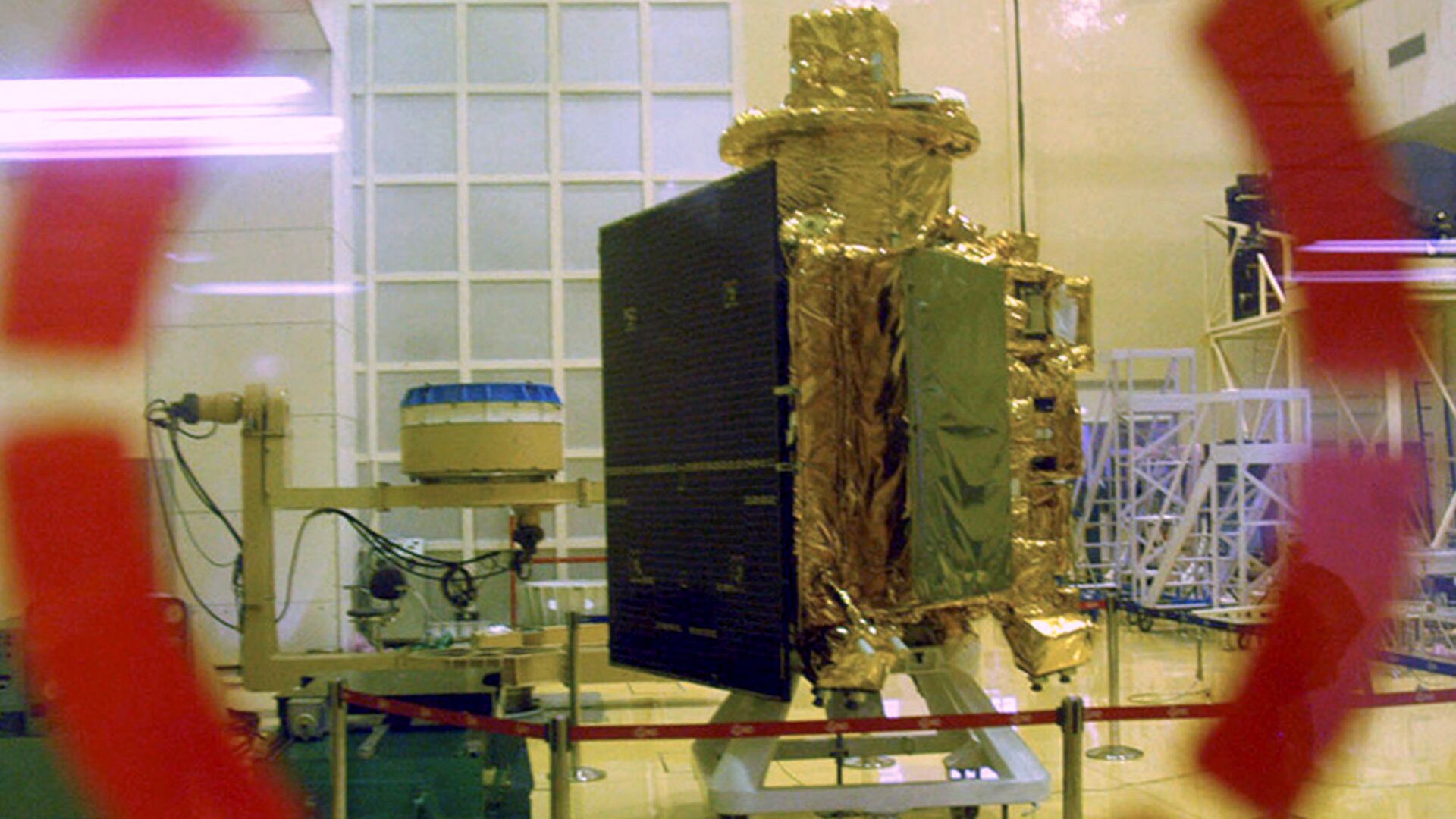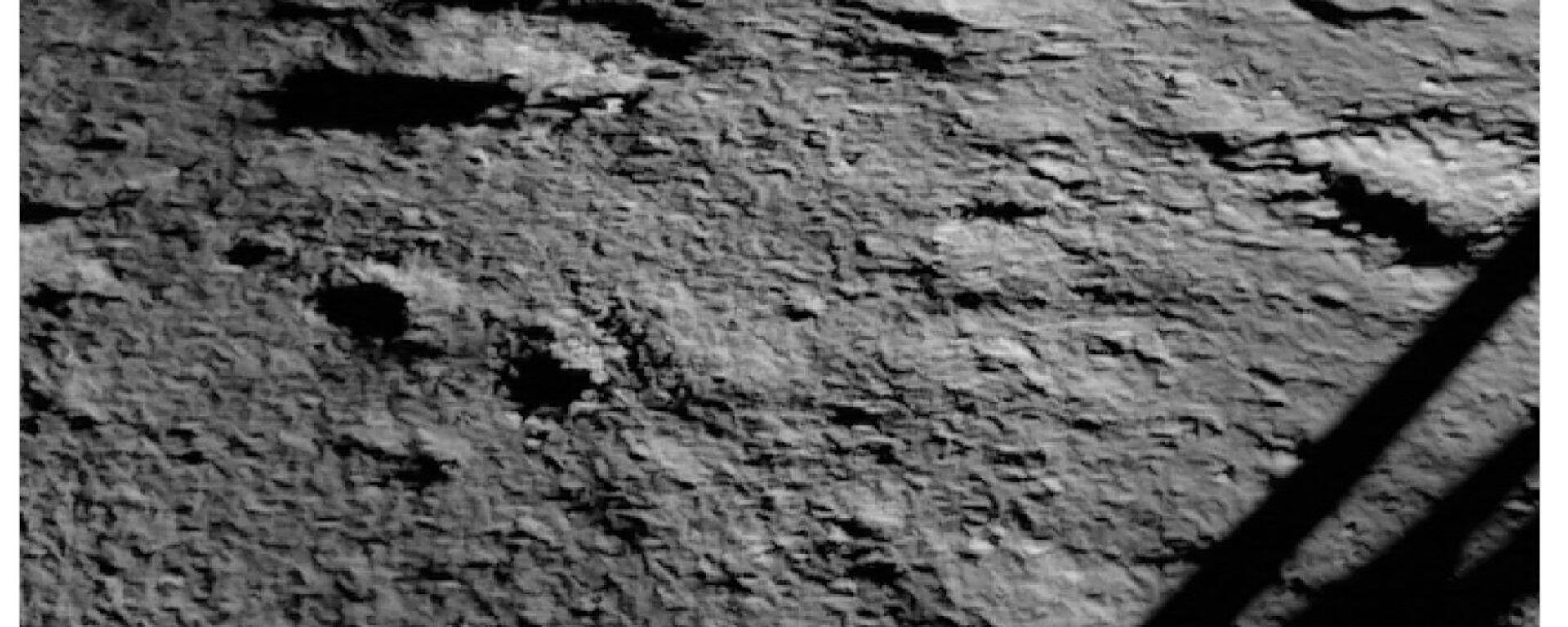https://sputniknews.in/20230915/chandrayaan-1-data-suggests-electrons-from-earth-forming-water-on-moon-4260854.html
Chandrayaan-1 Data Suggests Electrons From Earth Forming Water on Moon
Chandrayaan-1 Data Suggests Electrons From Earth Forming Water on Moon
Sputnik India
Scientists using the data of the Chandrayaan-1 mission have explained the reason for the origin of water ice discovered in the permanently shaded regions on the Moon.
2023-09-15T16:57+0530
2023-09-15T16:57+0530
2023-09-15T16:57+0530
science & tech
science & tech
moon
india
us
chandrayaan
indian space research organisation (isro)
space satellite
space industry
space exploration
https://cdn1.img.sputniknews.in/img/07e7/09/0f/4262924_0:261:2000:1386_1920x0_80_0_0_c2d7fc0f8b2f0f396f3b33016f901532.jpg
Scientists using the data of the Chandrayaan-1 mission have explained the reason for the origin of water ice discovered in the permanently shaded regions on the Moon.Analyzing the remote sensing data, scientists discovered that high energy electrons from the Earth may be forming water on the Moon, concluded the University of Hawai'i (UH) at Manoa in the US.Data from Chandrayaan-1 was collected in 2008-2009 by the Moon Mineralogy Mapper.The study published in the journal Nature Astronomy said that high-energy electrons in our planet’s plasma sheet are contributing to weathering processes on the lunar surface and may have even aided the formation of water there.The plasma sheet is an area of trapped charged particles within the magnetosphere, part of the space around Earth controlled by its magnetic field.Understanding the origin of water on the Moon's surface is important for scientists as it could help future space exploration."This provides a natural laboratory for studying the formation processes of lunar surface water. When the Moon is outside of the magnetotail, the lunar surface is bombarded with solar wind. Inside the magnetotail, there are almost no solar wind protons, and water formation was expected to drop to nearly zero," said Shuai Li, an assistant researcher at the UH Manoa School of Ocean.For a general understanding, magnetotail is the part of a planet's magnetosphere that is elongated in the direction of the solar wind (i.e. away from the Sun). The Earth's magnetotail (the geotail) extends beyond the Moon's orbit.
https://sputniknews.in/20230909/chandrayaan-3-isros-share-vikram-lander-in-sleep-mode-images-4150224.html
moon
india
us
Sputnik India
feedback.hindi@sputniknews.com
+74956456601
MIA „Rossiya Segodnya“
2023
Deexa Khanduri
https://cdn1.img.sputniknews.in/img/07e6/0c/13/138923_52:0:533:481_100x100_80_0_0_cadf23d341691fc65ff2b22fd1afe584.jpg
Deexa Khanduri
https://cdn1.img.sputniknews.in/img/07e6/0c/13/138923_52:0:533:481_100x100_80_0_0_cadf23d341691fc65ff2b22fd1afe584.jpg
News
en_IN
Sputnik India
feedback.hindi@sputniknews.com
+74956456601
MIA „Rossiya Segodnya“
Sputnik India
feedback.hindi@sputniknews.com
+74956456601
MIA „Rossiya Segodnya“
Deexa Khanduri
https://cdn1.img.sputniknews.in/img/07e6/0c/13/138923_52:0:533:481_100x100_80_0_0_cadf23d341691fc65ff2b22fd1afe584.jpg
chandrayaan 1, moon surface, natura astronomy, lunar surface, moon surface, electrons, chandrayaan 3, chandrayaan 3 launch date, chandrayaan, chandrayaan-3, chandrayaan-3 launch date, chandrayaan 3 upsc, photos of chandrayaan, india moon mission, india's moon mission, moon mission, pragyan rover, what is vikram lander and pragyan rover, what chandrayaan will do on moon, is chandrayaan sucessful, vikram moon rover, चंद्रयान-3
chandrayaan 1, moon surface, natura astronomy, lunar surface, moon surface, electrons, chandrayaan 3, chandrayaan 3 launch date, chandrayaan, chandrayaan-3, chandrayaan-3 launch date, chandrayaan 3 upsc, photos of chandrayaan, india moon mission, india's moon mission, moon mission, pragyan rover, what is vikram lander and pragyan rover, what chandrayaan will do on moon, is chandrayaan sucessful, vikram moon rover, चंद्रयान-3
Chandrayaan-1 Data Suggests Electrons From Earth Forming Water on Moon
Deexa Khanduri
Sputnik correspondent
India’s first lunar mission, Chandrayaan-1, launched in October 2008. The spacecraft entered the Moon's orbit – making India one of the countries to taste success in its maiden attempt.
Scientists using the data of the Chandrayaan-1 mission have explained the reason for the origin of water ice discovered in the permanently shaded regions on the Moon.
Analyzing the remote sensing data, scientists discovered that high energy electrons from the Earth may be
forming water on the Moon, concluded the University of Hawai'i (UH) at Manoa in the US.
Data from Chandrayaan-1 was collected in 2008-2009 by the Moon Mineralogy Mapper.
The
study published in the journal Nature Astronomy said that high-energy electrons in our planet’s plasma sheet are contributing to weathering processes on the lunar surface and may have even aided the formation of water there.
The plasma sheet is an area of trapped charged particles within the magnetosphere, part of the space around Earth controlled by its magnetic field.
Understanding the origin of water on the Moon's surface is important for scientists as it could help future space exploration.
The magnetosphere plays an important role in protecting Earth from space weather and direct radiation from the Sun. The solar wind pushes this magnetosphere and reshapes it, making a long tail, and the plasma sheet in this tail region of the magnetosphere contains high-energy electrons and ions from the Earth and from the solar wind.
"This provides a natural laboratory for studying the formation processes of lunar surface water. When the Moon is outside of the magnetotail, the lunar surface is bombarded with solar wind. Inside the magnetotail, there are almost no solar wind protons, and water formation was expected to drop to nearly zero," said Shuai Li, an assistant researcher at the UH Manoa School of Ocean.
For a general understanding, magnetotail is the part of a planet's magnetosphere that is elongated in the direction of the
solar wind (i.e. away from the Sun). The Earth's magnetotail (the
geotail) extends beyond the Moon's orbit.



